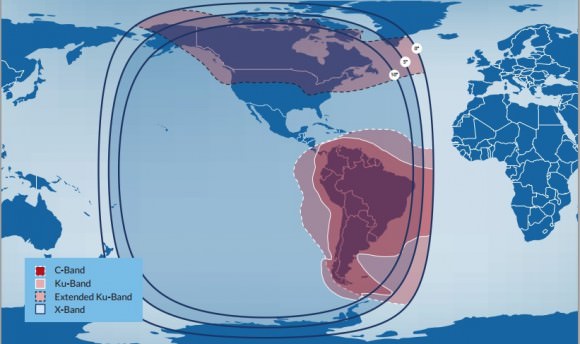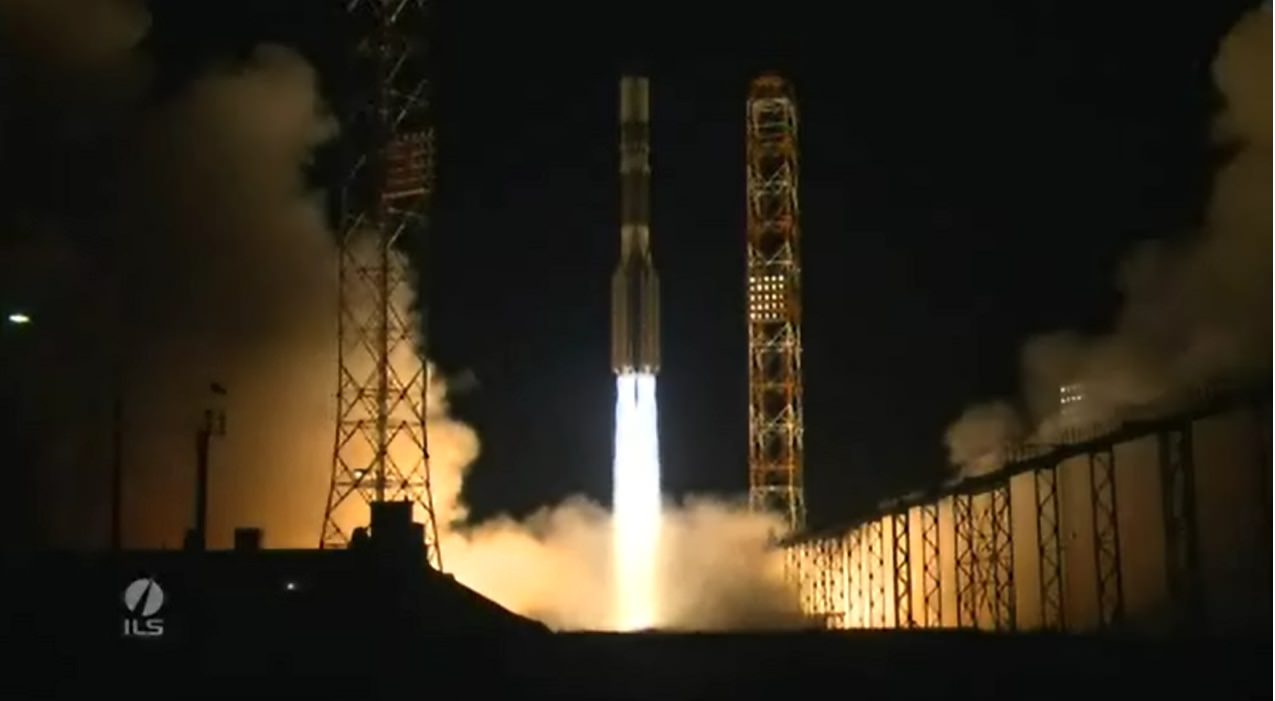Update, April 16, 8:20 a.m. EDT: Anik G1 was successfully released from the upper stage of the rocket nine hours and 13 minutes after the launch. The satellite is now in orbit above Earth.
A new communications satellite aims to ease the strain of overcrowded communications networks in Latin America, while adding capacity to direct-to-home services in Canada and government and military users across the Americas.
Anik G1 lifted off at 2:36 p.m. EDT (6:36 p.m. UTC) today, April 15, from Baikonur, Kazakhstan. The satellite, carried by a Proton-M rocket, is still undergoing orbital maneuvers as of this writing; the upper Breeze-M stage will fire five times to put Anik G1 in the proper orbit.
These maneuvers should be completed about 9 hours after launch, if all goes well, at which point Anik G1 will separate.
Anik G1 is expected to last 15 years, a typical lifespan for a communications satellite. Once Anik G1 is activated, should all go well with the deployment, Canadian operator Telesat is marketing the satellite as a way to alleviate overcapacity in Latin American telecommunications services.
That geographical area is seeing a deluge in demand for telecommunications services, leading to shortages in countries such as Brazil. That country in particular is one of the fastest-growing economies in the world. Satellite demand is expected to increase due to the 2014 FIFA World Cup of soccer in Brazil, as well as the 2016 Olympics, according to Satellite Markets & Research.

Demand is particularly pronounced in the C- and Ku- microwave bands of telecommunications that Anik G1 will provide. Telesat, which has satellites all around the world, already has three other machines serving Latin America: Anik F1, Telstar 12 and Telstar 14R. Telesat is also targeting the cellular market with Anik G1, which is seeing a large influx of people demanding instant video services on the go.
Who’s buying up Anik G1’s capacity so far? One player is Panasonic Avionics Corp., which signed long-term deals for both Telstar 11N and Anik G1. The company is looking for more satellite services for in-flight entertainment and communication systems on airplanes. Panasonic is currently using Anik F1, and will move over to Anik G1 once the new satellite is fully operational.
Other large customers for Anik G1 include cable operator Shaw, which will use the Ku-band capacity for direct-to-home satellite programming in Canada. Astrium Services, which will use Anik G1’s X-band across the Americas, will serve military customers: the Canadian Department of National Defence and the U.S. Department of Defense.

